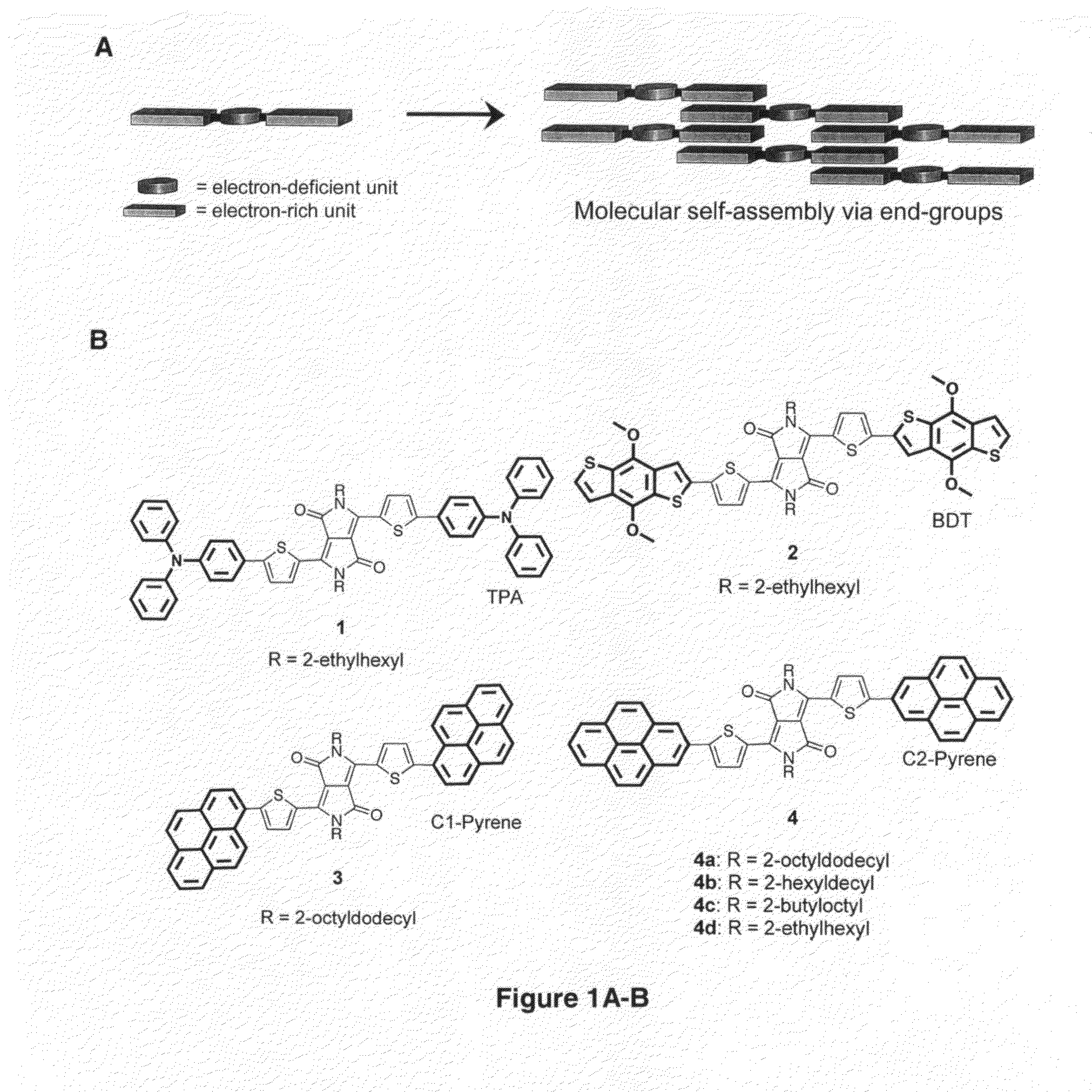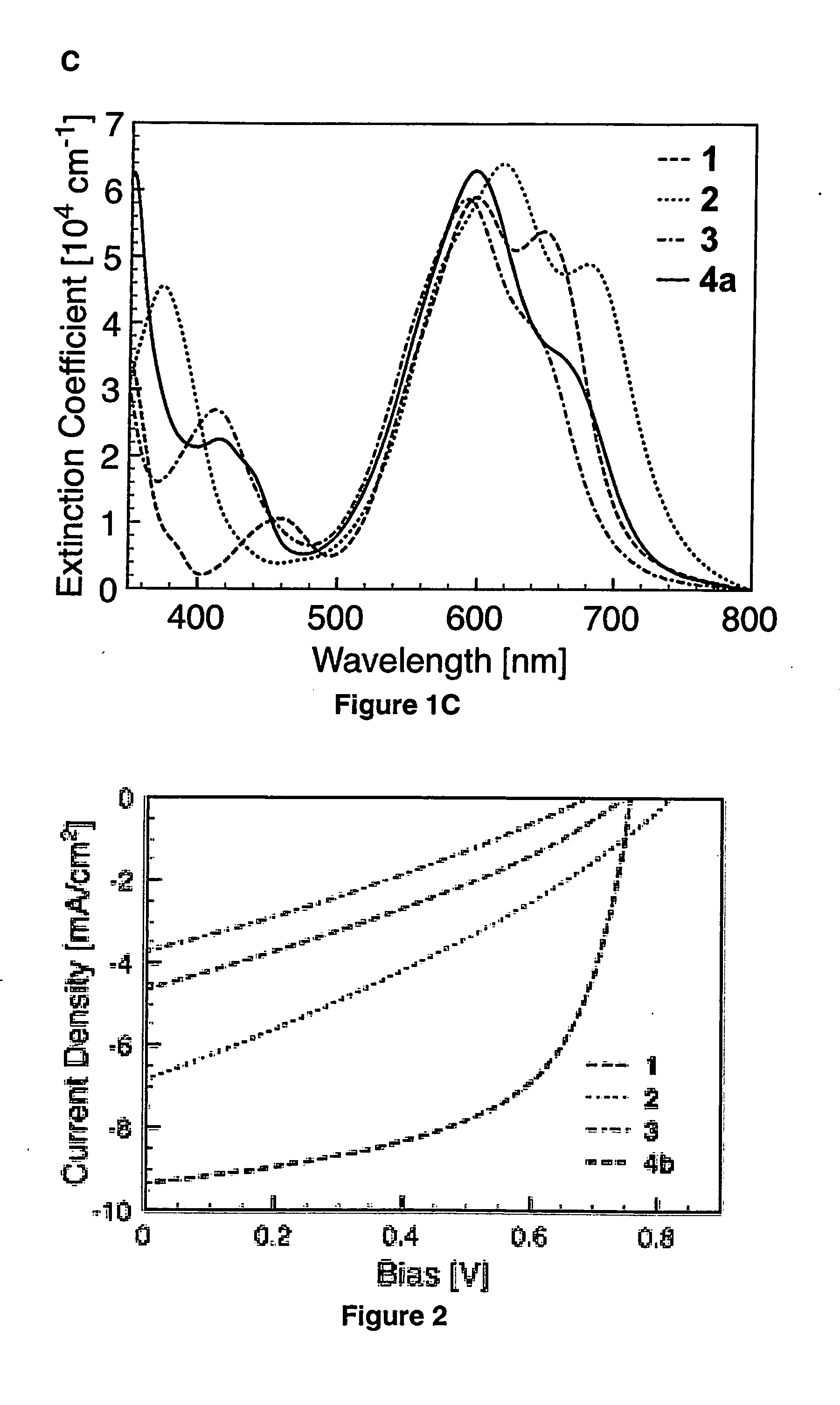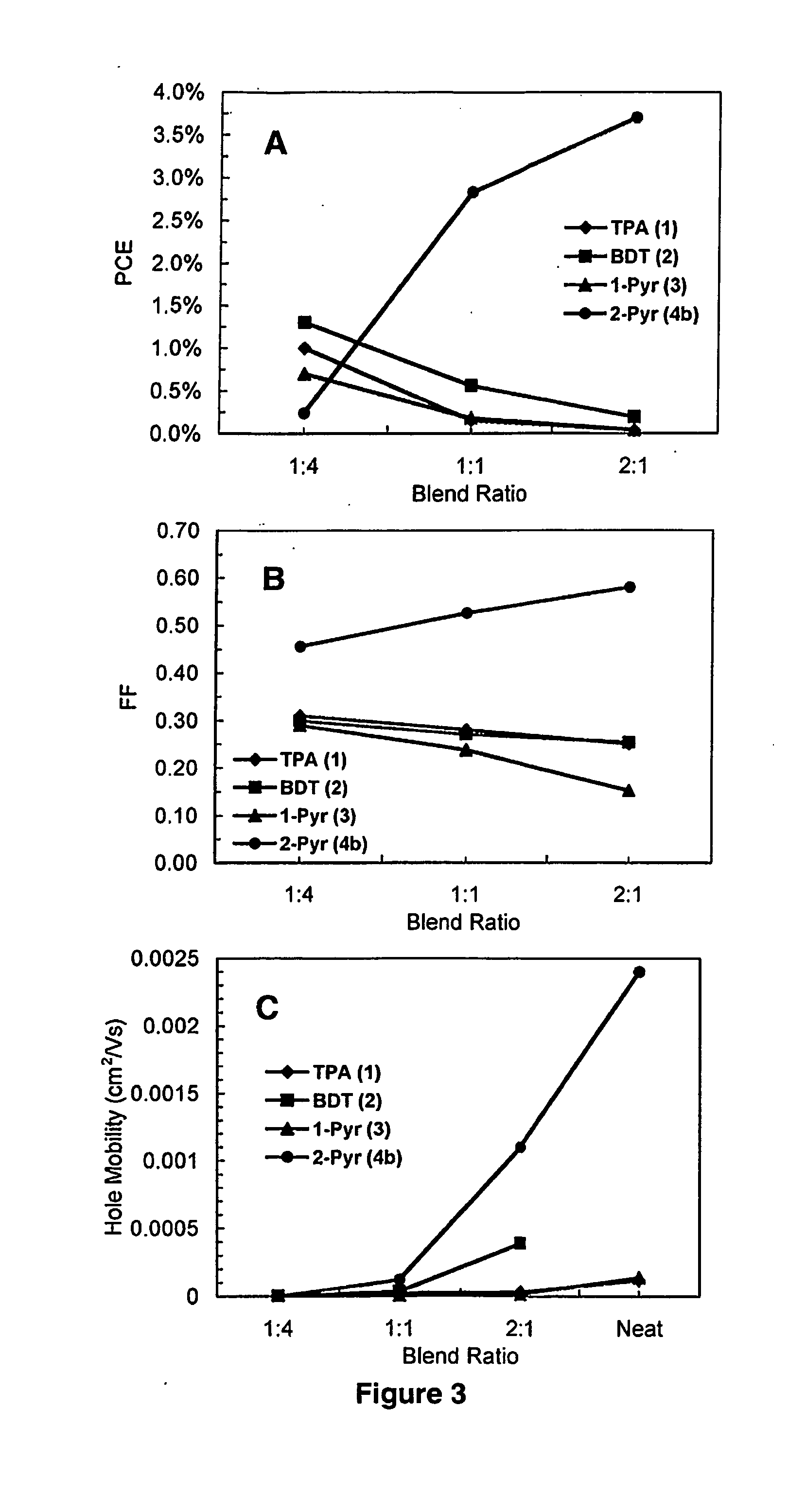End-Group-Directed Self-Assembly of Organic Compounds Useful for Photovoltaic Applications
a photovoltaic and end-group technology, applied in the field of photovoltaics, can solve the problems of batch-to-batch molecular weight and polydispersity variations, tedious material purification, and conjugated polymers, and achieve the effects of maximizing solar cell device fill-factors and power conversion efficiency, increasing intermolecular connectivity and charge transport, and limiting the size of the crystalline domain formed
- Summary
- Abstract
- Description
- Claims
- Application Information
AI Technical Summary
Benefits of technology
Problems solved by technology
Method used
Image
Examples
example 1
Efficient Small Molecule Bulk Heterojunction Solar Cells with High Fill Factors via Pyrene-Directed Self-Assembly
[0050]Organic photovoltaics (OPVs) are a promising technology for cost-effective and scalable production of renewable energy.[1] Current research in OPV materials focuses primarily on the design and synthesis of semiconducting polymers capable of both light absorption and charge transport. In OPV cells utilizing a bulk heterojunction (BHJ) architecture, conjugated polymers have demonstrated promising device efficiency; however, they can suffer from drawbacks such as batch-to-batch variation and chain-end contamination, which can reduce overall performance and device consistency.[2a,3]
[0051]In order to develop OPV materials that exhibit not only favorable electronic properties but also batch-to-batch consistency, electroactive small molecules have recently received attention as alternatives to polymers.[2] Small molecules can be synthesized and solution-processed into devi...
PUM
 Login to View More
Login to View More Abstract
Description
Claims
Application Information
 Login to View More
Login to View More - R&D
- Intellectual Property
- Life Sciences
- Materials
- Tech Scout
- Unparalleled Data Quality
- Higher Quality Content
- 60% Fewer Hallucinations
Browse by: Latest US Patents, China's latest patents, Technical Efficacy Thesaurus, Application Domain, Technology Topic, Popular Technical Reports.
© 2025 PatSnap. All rights reserved.Legal|Privacy policy|Modern Slavery Act Transparency Statement|Sitemap|About US| Contact US: help@patsnap.com



